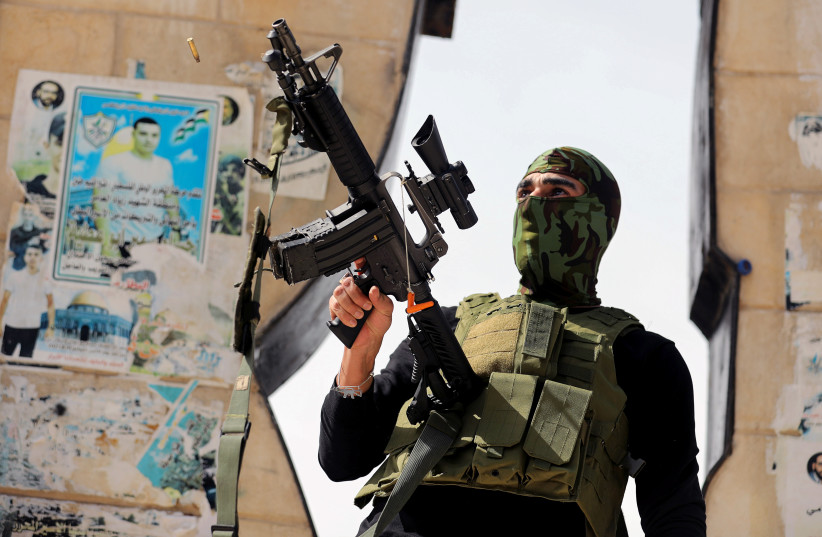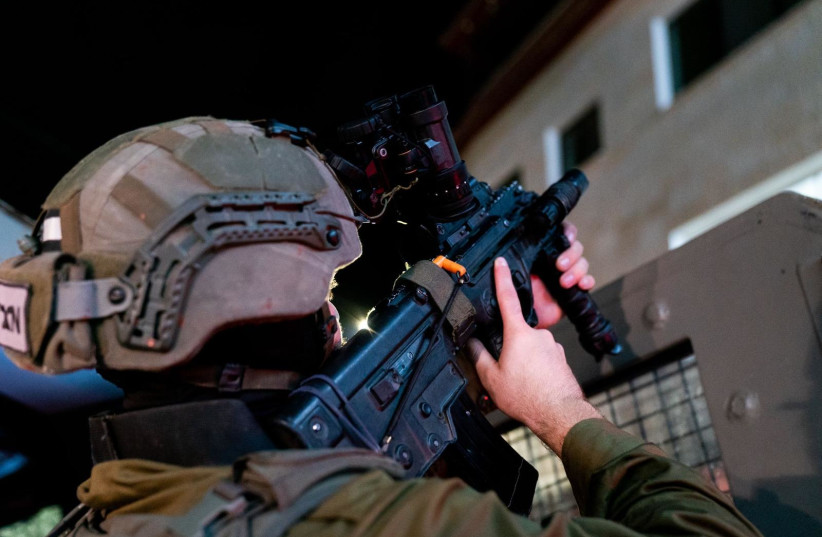With the recent rise in Palestinian violence in the West Bank, IDF commanders have been training to prepare for the possibility of using armed drones during counter-terrorism operations, the Israeli military said.
First reported by KAN News and confirmed to The Jerusalem Post, Judea and Samaria Division Commander Brig.-Gen. Yaniv Alaluf and Menashe Brigade Commander Col. Arik Moyal recently underwent training to operate an air force assault command center that monitors and controls armed drones.
What does this mean for the West Bank?
Following their training on the systems, they will be able to command the use of drones during operations.
The Israeli military has been conducting nightly operations in the West Bank as part of Operation Break the Wave. It is an attempt to crack down on Palestinian terrorism in the West Bank, with a focus on the northern West Bank cities of Jenin and Nablus.

Over the four months since the operation began, more than 2,050 counterterrorism operations have been carried out, during which over 1,500 wanted individuals have been apprehended and hundreds of weapons seized.
Violent clashes, many times with heavy gunfire leveled at Israeli forces, are becoming an almost regular occurrence during the raids. Close to 90 Palestinians have been killed during the clashes, including one man identified as 21-year-old Yunis Ghassan Tayeh, who was killed in the Far’a refugee camp after he threw an improvised explosive device at troops.
Already in May, the IDF was mulling revamping its defensive strategy in the West Bank following the death of YAMAM officer Noam Raz, who was killed by Palestinian gunmen during a raid.

According to a report in Haaretz, the military was considering using helicopters and introducing special drone units to secure group troops during operations, and even fire on armed Palestinians.
With the rise in violence, IDF Chief of Staff Lt.-Gen. Aviv Kohavi warned that military activity in the West Bank could increase if necessary.
Speaking at a military conference on Monday, he laid some of the blame for the violence on the Palestinian Authority.
“Part of the increase in terrorism stems from the helplessness of the Palestinian Authority security forces, leading to a lack of governance in certain areas of Judea and Samaria, and these are fertile ground for the growth of terrorism,” he said.
“Part of the increase in terrorism stems from the helplessness of the Palestinian Authority security forces, leading to a lack of governance in certain areas of Judea and Samaria, and these are fertile ground for the growth of terrorism.”
IDF Chief of Staff Lt.-Gen. Aviv Kohavi
“As always, even in face of this development, our test is protecting the citizens of Israel, and our mission is to thwart terrorism. We will reach every city, neighborhood, alley, house or basement for that purpose,” Kohavi continued. “Our activity will continue and we are prepared to increase it as needed.”
Last month, the Military Censor allowed the publication of the use of attack drones by the Israel Air Force.
The international press has reported the use of these drones by the IAF for at least the past 20 years. Their use has been extensively documented in US diplomatic cables as well as at international air shows. Nonetheless, the IDF never publicly disclosed the use of such platforms, and Israeli journalists who attempted to publish such reports were blocked by the censor.
Over the past decade, the operational use of drones by air forces around the world and by the IAF has increased drastically, with almost every operation now seeing the use of these platforms.
IAF drone squadrons fly about 80% of all IAF flight hours. With four drone squadrons based at Palmahim Air Force Base, 70% of all IAF flight hours take off from the base just south of Tel Aviv.
The drones flown by the IAF can be deployed on a large range of missions, from surveillance of targets in enemy countries, to tracking weapons smuggling, to destroying enemy targets which pose an imminent threat to the home front.
Drones played a significant and integral part in Operation Guardian of the Walls in May, with most of them taking off from Palmahim Air Force Base in central Israel. According to data released by the IDF, about 643 missions were carried out by drones for a total of 132.6 flight hours during the 11 days of fighting with terrorist groups in the Gaza Strip.
There are hundreds of drones in IAF hangars across the country. These range from commercial DJI drones to the Skylarks (which are notorious for crashing in Gaza or in the north) to the larger Shoval, known across the world as the Heron and the Eitan.
